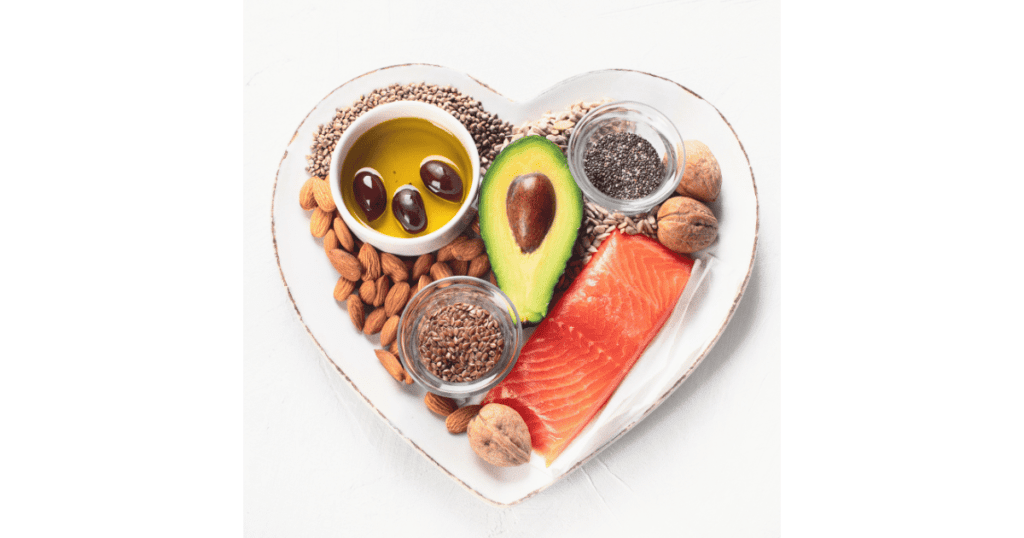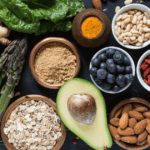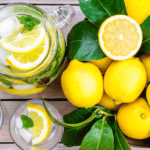Remember the low-fat diet craze of the 80s? Everything was about low-fat regardless of what else was in it. Lots of sugar? That’s OK as long as it’s low-fat. White pasta? Sure thing! Low-fat cookies? So healthy! We replaced meats, cheeses, and oils with pasta, potatoes, and rice. And despite it being dubbed “low-fat”, the diet actually made us fatter!
Then the fad did a complete 180 into the Atkins diet. You could eat all the bacon and cheese your heart desired (or could physically withstand!) Pasta, potatoes, and rice = bad! Hamburgers, butter, and cream = good! But alas, it was too good to be true. Our cholesterol skyrocketed, and we learned a lesson about good fats and bad fats.
The learnings from both of those diets birthed a much-healthier plan for losing weight – the keto diet. Keto strikes a good balance between low carb and healthy fat. It’s like the wiser, more sophisticated, older sister to Atkins. She realizes that low carb and high fat do lead to weight loss, but the type of fat makes a big difference.
So, let’s talk about keto and a few of my favorite healthy fats. I’ll also give you ideas on how to incorporate them into your keto or another low-carb meal plan.
As an Amazon Associate, I earn from qualifying purchases. Additionally, this post may contain other affiliate links and I earn a small commission when you purchase through these links at no additional cost to you.
What is the keto diet?
The ketogenic diet (or keto, for short) is a low-carb, high-fat diet that can help you lose weight and improve your health. On this diet, you significantly decrease your intake of carbohydrates and replace it with an increase in healthy fats. Doing so puts your body in a state of ketosis. Ketosis is a metabolic state in which your body burns fat for energy instead of glucose. This can be highly effective for losing weight.
What are unhealthy and healthy fats?
Dietary fats can be categorized as unhealthy or healthy. Unhealthy sources include saturated and trans fats. These fats are typically solid at room temperature. Examples include butter, cheese, red meat, and palm and coconut oils. These fats increase your LDL or bad cholesterol. And elevated bad cholesterol increases your risk of heart disease and stroke.
Healthy fats, on the other hand, are unsaturated. These tend to be liquid at room temperature and come from plant-based sources, such as vegetable oils, nuts, and seeds. Unsaturated fats are considered healthy because they can improve your cholesterol and decrease inflammation, which decreases your risk of heart disease and stroke.
What are healthy fats for keto?
Avocados
Oh creamy, pale-green deliciousness! A high-fat, yummy food that’s good for you? Yes, please. It seems every time the topic of good fats comes up, avocado is the first word out of everyone’s mouth. They’re packed with heart-healthy monounsaturated fats and are high in fiber. A medium avocado contains about 240 calories, 13 grams of carbohydrate, 3 grams of protein, 22 grams of fat, 10 grams of fiber, and 11 milligrams of sodium. Wait – but aren’t you supposed to avoid carbs on this diet? Yes. But nearly all fruits and vegetables contain carbohydrates, and you’re not going to avoid them altogether. Some fruits and vegetables contain lower levels of carbohydrates, and those are the ones you should include in your keto diet. Avocados are considered low-carb.
Here are a few ways I like to incorporate avocados into a low-carb diet:
- Slice up half an avocado and eat it alongside eggs at breakfast
- Mash up an avocado with diced red onion, jalapeno, tomato, cilantro, and fresh lime juice for fresh guacamole. Eat this with these keto-friendly chips.
- Add diced avocado to your favorite, low-carb salad for lunch.
- Add half of an avocado to your keto-friendly protein shake to give it a creamy consistency.
Olives
Every time I think about olives, I harken back to sitting at the kids’ table with my cousins at Thanksgiving dinner and putting a black olive on the tip of each of our fingers. Did you all do that? Just me? Anyway, I’ve always been a big fan of olives. When I was a kid, I only liked the plain ol’ black olives in a can. Into my teens, I branched out and included green (manzanilla) olives. As an adult, I now enjoy the full spectrum of salty, delicious, high-fat fruit (yep – they’re actually a fruit). Ten green olives contain 58 calories, 6 grams of fat, 1.5 grams of carbohydrates, 1.3 grams of fiber, 0.4 grams of protein, and 620 milligrams of sodium.
Here are a few ways I like to include olives in a keto diet:
- Include your favorite olives in a low-carb salad along with chicken or salmon.
- Eat a handful of olives for a mid-morning or afternoon snack.
- Spread some olive tapenade on a piece of toasted keto bread.
Flax and chia
Flax and chia seeds are both good, plant-based sources of omega-3 fatty acids, which help improve brain function and boost the immune system. They’re also a good source of protein, fiber, and various minerals. One tablespoon of ground flaxseed contains 2 grams of polyunsaturated fatty acids (including the omega 3s), 2 grams of dietary fiber, and 37 calories. Two and a half tablespoons of dried chia seeds have 140 calories, 5 grams of protein, 10 grams of fiber, 12 grams of carbohydrate, and 9 grams of fat, of which 8 grams are heart-healthy fats.
My favorite way to incorporate these into my daily diet is to put them in my morning protein shake. I’ve found it’s less expensive to buy flax and chia seeds from Thrive Market than from the grocery store. Use the link below to get $60 in free groceries.
Olive oil
Olive oil comes in three grades: extra virgin, virgin, and refined. The grades vary on the amount of processing they go through. Extra virgin olive oil (EVOO) is the healthiest of the three grades because it is the least processed. Not only is it rich in healthy, monounsaturated fats, but it also contains a lot of plant nutrients called phytochemicals. One tablespoon of EVOO contains 120 calories, 14 grams of fat, and no protein, carbohydrates, fiber, or sugar.
A few ways I like to incorporate olive oil into my diet include:
- Homemade salad dressing: whisk together 3 tablespoons of EVOO with 1 tablespoon of fresh lemon juice, ½ teaspoon Dijon mustard, ¼ teaspoon freshly ground black pepper, 1/8 teaspoon salt, and 1 minced clove of garlic.
- Sauteing vegetables in it.
Avocado oil
Not only is avocado oil high in healthy, unsaturated fats, but it’s also a good source of lutein. Lutein is a carotenoid and antioxidant that’s naturally found in the eyes. Research has shown that a diet rich in lutein may help prevent cataracts and macular degeneration. Your body doesn’t produce lutein, so you must get it from your diet. A tablespoon of avocado oil contains 124 calories, 14 grams of fat, 1 milligram of sodium, and 0 grams of carbohydrates, protein, fiber, and sugar.
Avocado oil also has a higher smoke point than most plant-based oils, making it a great option for sauteing, grilling, roasting, or searing.
Try tossing some vegetables with avocado oil, salt, and pepper and roasting them. Or mix up the homemade salad dressing I included above with avocado oil instead of olive oil.
Thrive Market has a variety of high-quality avocado oils, and you get $60 in free groceries with the link below.
Salmon
Lastly salmon is a heart-healthy way to include fat in your keto diet plan. It is also high in omega-3 fatty acids, which support brain function and reduce inflammation. Salmon is considered a superfood and includes many vitamins and minerals like selenium, phosphorus, zinc, potassium, and B vitamins. Wild-caught salmon is higher in nutritional value than farm-raised salmon. That’s because wild salmon consume a natural diet of crustaceans and smaller fish, whereas farm-raised salmon are fed artificial pellets. You can get high-quality, reasonably-priced wild-caught Alaskan salmon from Thrive Market.
Summary
Including healthy fats like those mentioned above can help you feel full so that you don’t find yourself reaching for unhealthy snacks. Making healthy food choices while following the keto diet, such as focusing on healthy fats, can help you reach your health and fitness goals faster and more effectively.
For more detailed information about healthy fat sources, it’s always best to speak with your doctor or healthcare provider. They can help you determine what healthy fats are right for you and how much of each to include in your daily meals. With their expertise and guidance, you can get the most out of following a healthy and balanced keto diet! Good luck!





Pingback: 25 of the Best Gluten-Free Snacks - Healthy in Midlife